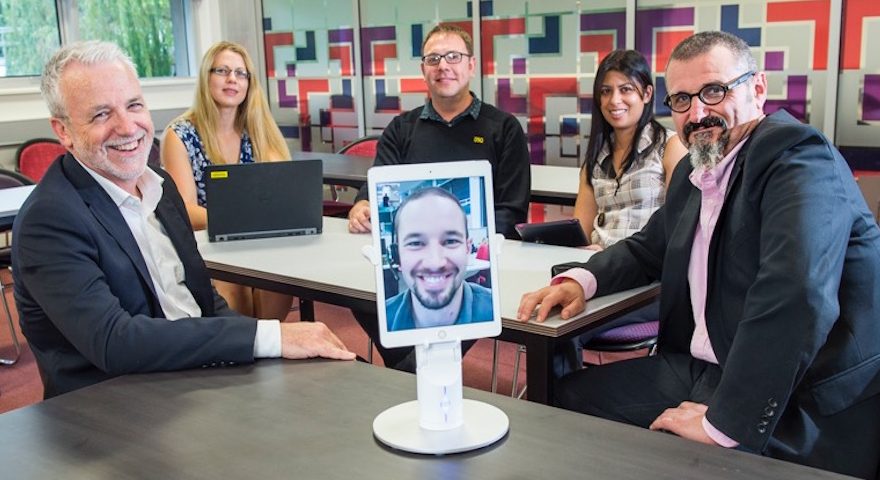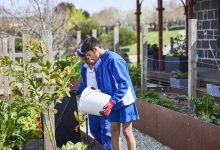
Fresh air, sunshine and a connection to nature are all linked to improved wellbeing. Why, then, do we keep students inside for so much of the school day?
The Nature School (TNS) is challenging this model, bringing learning outside and away from the desks and chairs of the typical classroom. Students are encouraged to spend as much time outdoors as possible. Learning, understanding, and growing are all facilitated through a strong connection with the natural world.
Read the Term 3 edition of School News HERE
I asked Principal Catherine Shaw what a typical day at The Nature School looks like. She assured me TNS is anything but typical! “When students arrive, they head straight outside to play, warm up by the fire, feed the chickens, or work on their cubby house constructions. We play a djembe to let everyone know when it’s time to start the day,” Ms Shaw said.
Located in Port Macquarie, New South Wales, TNS does have classrooms, and delivers the same curriculum as some other schools – New South Wales Syllabus for the Australian Curriculum. The approach, though, is very different. Every subject is taught with a nature focus, and teaching takes place outdoors as much as possible. Learning by doing is prioritised and curiosity is encouraged.
Technology is used minimally with limited screentime, and purposeful use of technology is favoured over gamified learning. Textbooks are similarly de-emphasised, with a preference for varied learning resources to facilitate a learner led approach. Students are also supported to establish a connection to the local community.

“The benefits of connecting with the natural world are undisputed. In addition to improved mental health and overall wellbeing, there is an increase in resilience, confidence, problem solving, cooperation, decision making and the ability to assess risk. As children engage with nature and with each other, they are really learning about the world around them, and importantly about their place in it,” Ms Shaw said.
TNS incorporates an inquiry-based approach, facilitated by a strong connection to nature. In addition to explicit teaching, teachers pose questions, problems or scenarios, then encourage student-led investigations. In time, students become more confident in developing their own questions.
Originally operating as a bush immersion pilot program for children aged 3 to 6 years the program was well received by the local community, and expanded into an Early Years program in 2016. The school officially opened in 2018 initially as a K to 2 with around 20 students, and currently caters for 140 students. TNS Primary is now a thriving school, offering Kindergarten to Year 6, as well as the Early Years program, and a School Holiday Program.
Smaller class sizes at TNS mean teachers can focus on the individual needs of each student. There are opportunities for multi-age learning and inquiry-based projects. More than this, students have the space to learn, physically, mentally, and emotionally.
Of course, any learning environment is incomplete without excellent teachers and a network of skilled support staff. Educators at TNS have a passion for outdoor education, and a diverse range of skills that allow for rich and varied learning. Staff are skilled in areas including species identification, permaculture, fermentation, bush tucker, marine biology, ornithology and much more. Beyond their day jobs, many TNS staff indulge their love of nature in their spare time, enjoying recreational pursuits including birdwatching, gardening, surfing, and bushwalking.
The natural beauty of the school’s location on the New South Wales Mid North Coast is used to full advantage, with immersive learning experiences designed to connect and engage students with local heritage, cultures, landscapes, opportunities, and experiences. Moving well beyond the traditional four walls, the classroom can be anywhere, and learning takes place everywhere.

“Every student in every grade has a designated fortnightly offsite day, where learning happens on the beach, in the bush, or anywhere else across the beautiful Port Macquarie region connected with their units,” Ms Shaw said.
Called Adventure Days for primary students, and Field Studies Days for secondary students, Ms Shaw said these are the most rewarding learning opportunities for her personally, and for many TNS staff.
“Learning comes alive when you have the opportunity to connect the curriculum with the natural world.
“It’s a challenge though to make it all happen. On even weeks, Secondary students head off in our minibus to engage in Science and Geography in the Field. Recently, they trekked our Coastal Geo-trail to survey geological formations and analyse rock types. Then on odd weeks, Primary students each have a designated Adventure Day.
“So, on Tuesday, Kindy took the minibus to a local garden, on Wednesday Years 1 and 2 were at a farm, on Thursday Years 3 and 4 were tree planting for the local Koala Hospital, and on Friday Years 5 and 6 were investigating tree hollows suitable for owl species in local bushland. All of those locations and activities are connected with conceptual units of integrated learning, ensuring outcomes are met across the curriculum. And of course each site requires a risk assessment, plus teachers having their Light Rigid licence to drive the minibuses!”
There is a conceptual focus each term, and subjects are integrated as much as possible. This integrated nature-based approach to curriculum, Ms Shaw said, leads to a high level of engagement and deep level of learning. “Our Year 5 students, for example, have been engaged in studies about fungi this term. So when they have been off on Adventure Days they’ve surveyed bushland for fungi (Geography), identified species (Science), collected data (Mathematics), drawn botanical sketches (Art), and written about their findings (English). They’ve even compared mycelium with data networks (Technology)! It’s layer on layer of connected learning experiences.”

TNS has a strong relationship with traditional owners of the land on which they learn and teach, and respect for First Nations history, culture and contributions is championed.
“The Nature School stands on Birpai Country. We have an Aboriginal Educational Officer (AEO) on staff who supports colleagues and students alike in our learning about Culture and the Traditional Custodians of this land,” Ms Shaw said.
“We have a school Acknowledgement of Country which students share frequently, and our AEO also delivers Acknowledgement in Language. The Gathang Language is in revival, so it is important that we respectfully engage with Elders and follow protocols around Language.
“It’s so special when our AEO heads out on offsite days with our students. She can identify bush tucker, explain significant sites, and show all of us ways of reading and understanding Country.”
While the educational approach taken by TNS is unconventional, it has proven successful, and is highly regarded by the local community. Many year levels have long wait lists, as families see and hear about the benefits of a nature-based education.
This year, the school expanded to offer secondary education with a Year 7 class. “Each year as we’ve added grade on grade, demand has continued to grow. Parents overwhelmingly requested we continue growing into high school and it’s been incredibly exciting to step into the secondary space,” Ms Shaw said.
“The Nature School Board has committed to continuing our growth through to Year 10, when we will have a total cohort of around 200 students. It’s amazing to see just how much demand there is for a small, regional school with a progressive approach to education.”







